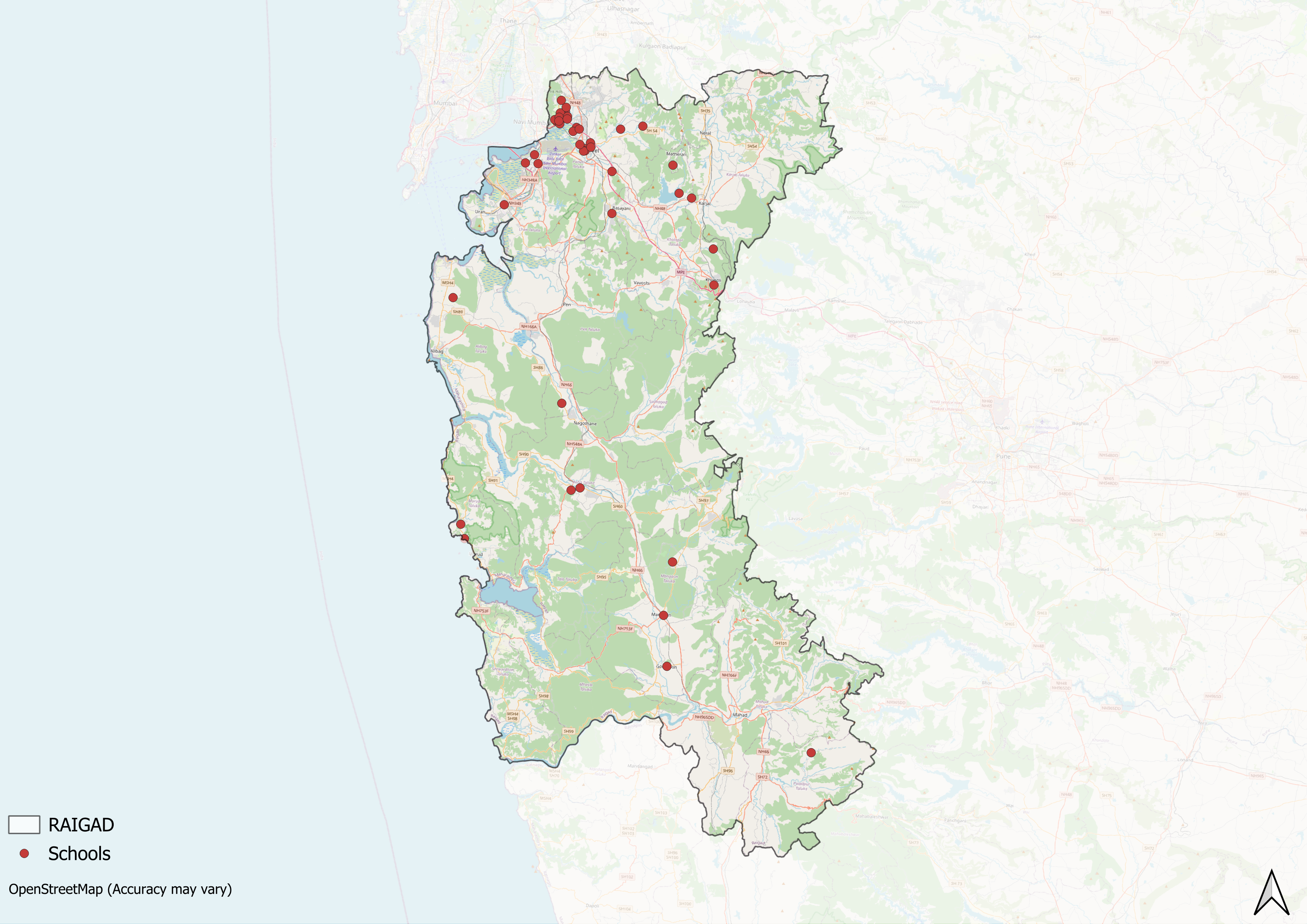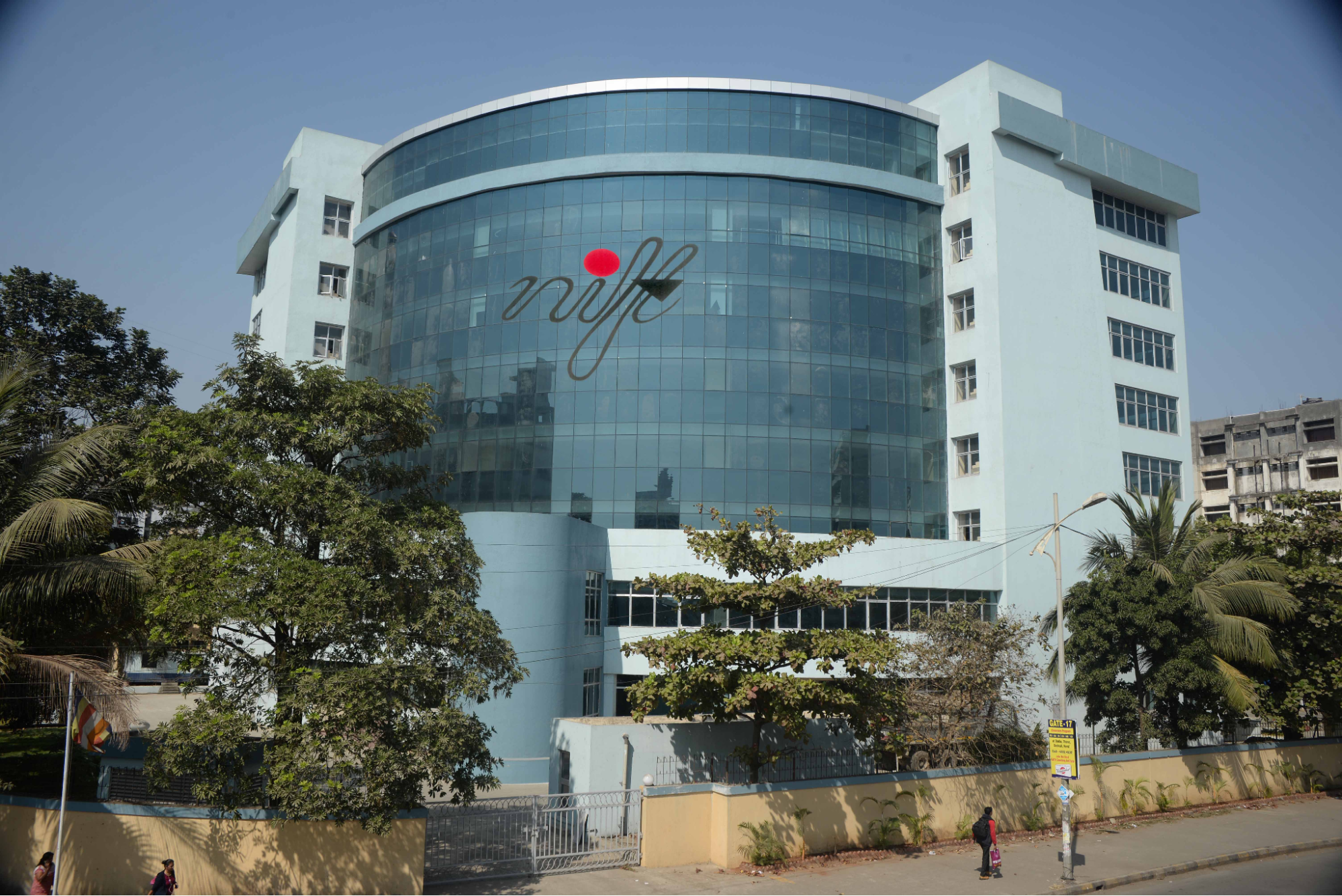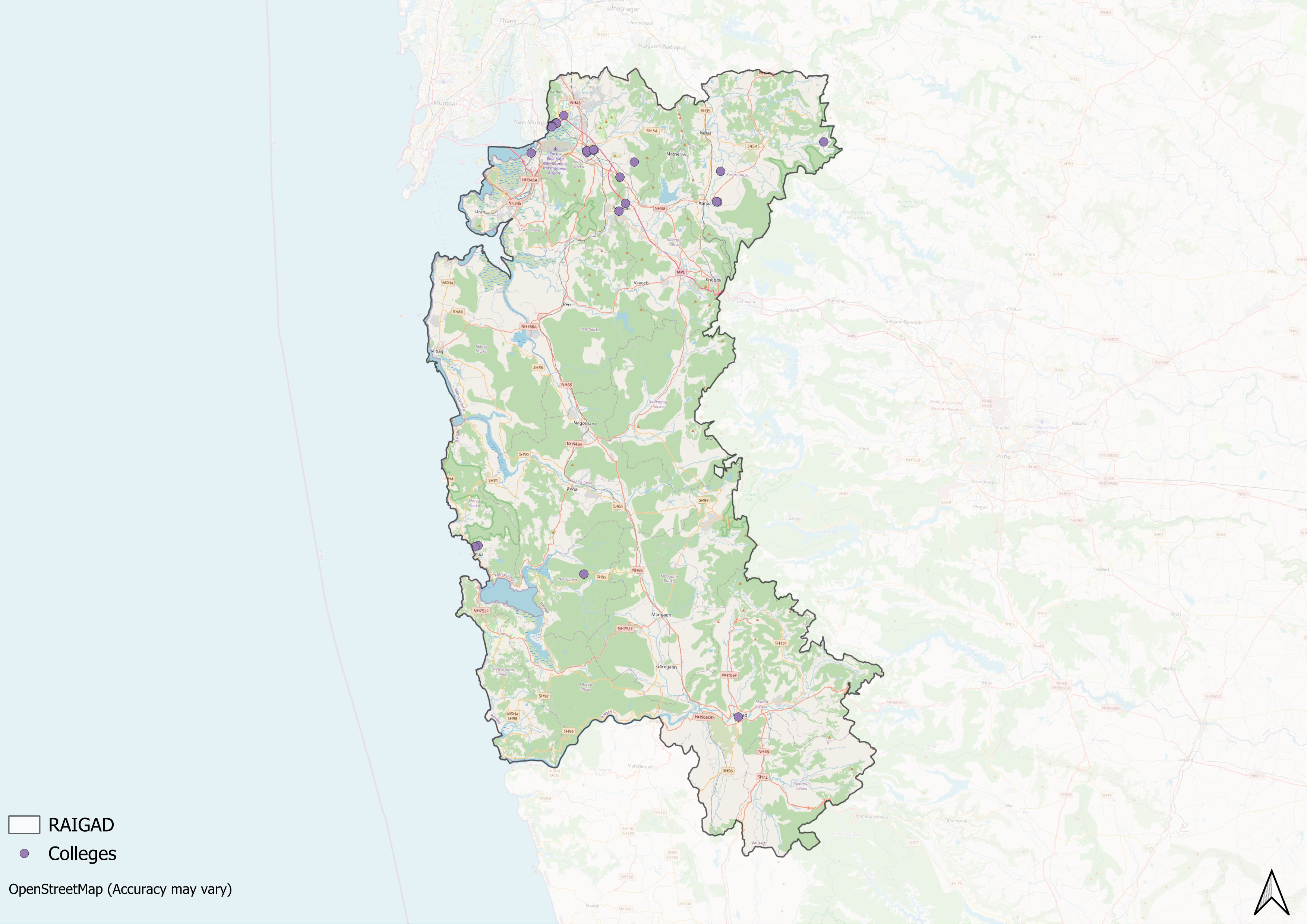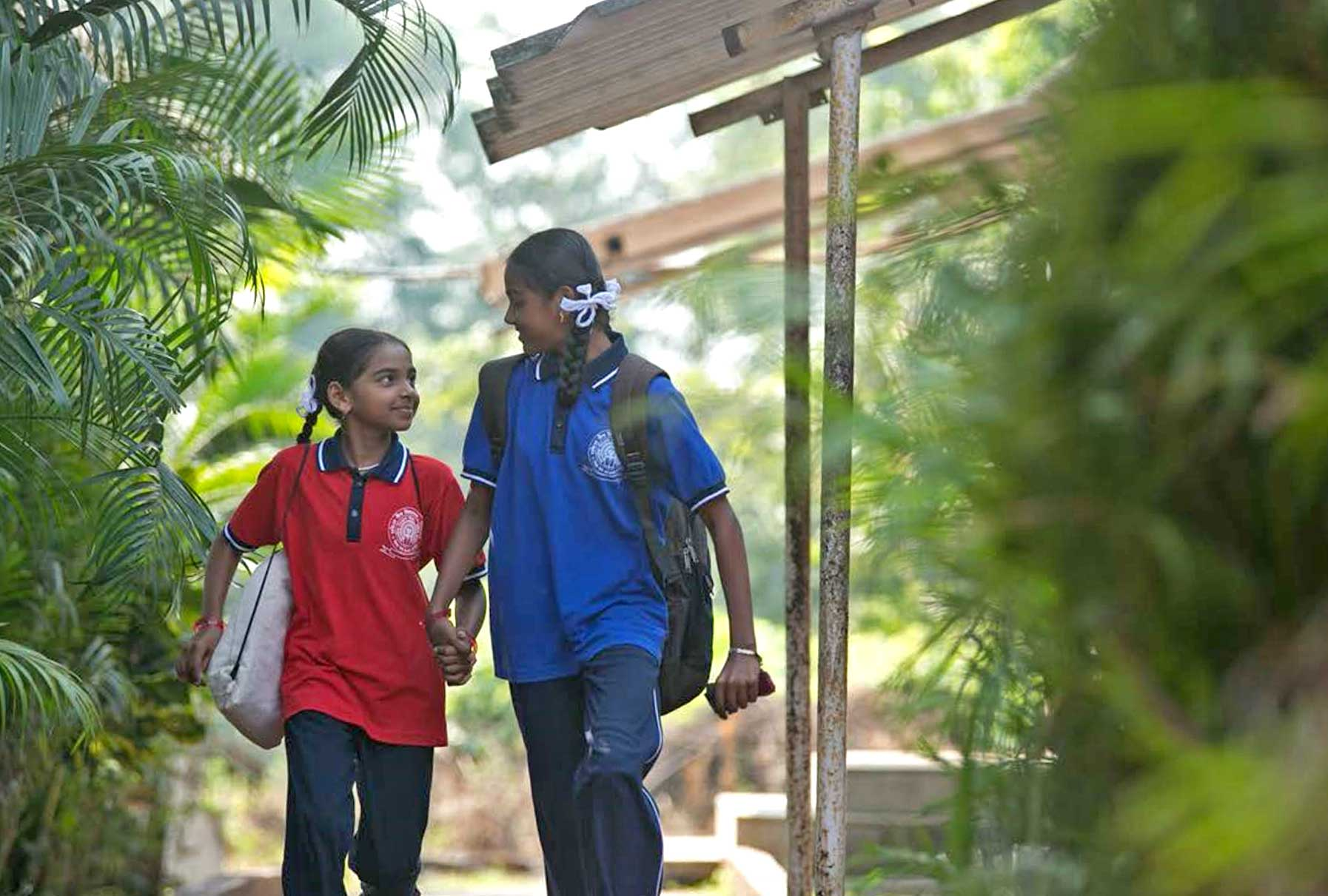Contents
- Early History
- Colonial History
- Local Figures & Organizations
- Pen Education Society
- Post-Independence Era and Contemporary Educational Infrastructure
- Primary & Secondary Education
- Institutions of Higher Learning
- Dr. Babasaheb Ambedkar Technological University, Lonere
- Dr. Babasaheb Ambedkar College of Arts, Commerce and Science, Mahad
- National Institute of Fashion Technology, Kharghar
- NGOs and Community-Based Education Efforts
- EmpowHER
- Graphs
- Enrollment and Dropout Rate
- A. Student Enrollment Numbers
- B. Student Enrollment (Class-Wise)
- C. Student Enrollment (Gender-Wise)
- D. Student Enrollment (By School Management Type)
- E. Drop Out Rate (By Schooling Level)
- F. Drop Out Rate (By Gender)
- Schools
- A. No. of Schools
- B. No. of Schools (Filtered by Gender Mix)
- C. No. of Schools (By School Management Type)
- Teachers
- A. No. of Teachers
- B. No. of Teachers (By School Management Type)
- C. No. of Teachers (Male vs Female)
- D. Education Level of Teachers
- Sources
RAIGAD
Education
Last updated on 28 July 2025. Help us improve the information on this page by clicking on suggest edits or writing to us.
The educational framework of Raigad aligns with the broader structure of the Indian education system, encompassing pre-primary, primary, secondary, and higher education. By the 19th century, the introduction of the Western education framework in the district changed its educational landscape. British administrators and missionaries became actively involved in shaping education in the region.
Still, even as colonial influences grew, the early 20th century saw a wave of local initiatives; its existence indicated an increasing public awareness regarding the importance of education. Local communities took charge of education, a movement that carried into the post-independence era, shaping the district’s educational landscape in lasting ways.
Early History
When it comes to the district’s early educational history, locals say that Raigad was home to several Vedpathshalas and Sanskrit Pathshalas that lay in regions like Mahad, Roha, Pen, Nagao, and Chaul. These institutions were instrumental in producing several distinguished scholars, astrologers, Ayurvedic doctors (vaidya), and mantriks. Graduates from these pathshalas practiced their arts across various regions, including Kashi, Indore, Gwalior, Vadodara, and Pune, earning accolades and rewards such as money and palkhis.
It is also noted in the Kolaba Gazetteer (1883) that private schools managed primarily by Brahmins offered instruction to both boys and girls below the age of twelve, indicating that some systems of education existed then. These schools were common prior to the expansion of state-run education by the British. Interestingly, these schools were known for their emphasis on the “ujalni” curriculum, which focused on arithmetic, particularly multiplication tables. Families often expressed appreciation by gifting teachers items such as turbans or waistcloths during ceremonies like upanayan (thread ceremony) or weddings.
Colonial History
During the 19th century, education in Raigad developed gradually under the influence of administrative restructuring, missionary activity, and local efforts. The British administration expanded formal education to the region, with the first government Marathi school established at Mahad in 1840. A second government school followed in Nagothane during the 1860s.
In 1861, the first independent primary school for girls was established in Alibaug. By the late 19th century, a growing interest in English-language education became evident. Several private English schools were founded in Alibaug, Pen, Roha, and Mahad, although many of these faced financial constraints and were eventually closed or taken over by municipal authorities. In 1879, it is noted that the Free Mission Church opened a school in Alibaug.
Local Figures & Organizations
While entities from the West played a significant role in shaping the educational landscape of Raigad, local figures and organizations also emerged as key contributors. Many of them established institutions that continue to shape education in the district today, alongside community-led organizations that have played a lasting role in its development.
Pen Education Society
Founded in 1910, the Pen Education Society is one of the oldest educational bodies in the district. Its first school, known as The Private High School, was established during the colonial period. It was named that way, fascinatingly, because locals say that British schools were referred to as public schools during that time. The society currently runs ten branches across Pen and nearby villages, offering education from the primary to postgraduate level. Its oldest branch dates back over a century; the most recent was established in the early 2000s.
Post-Independence Era and Contemporary Educational Infrastructure
Following India's independence, the education system in Raigad underwent major transformations. The introduction of structured education levels: pre-primary, primary, secondary, and higher education, and the implementation of National Education Policies heavily shaped the educational landscape of the district. Over the years, the education sector has developed with contributions from both government-funded institutions and private organizations. Additionally, Educational boards were also introduced, each offering distinct curricula and standards, providing students with more choices.
Primary & Secondary Education
During the colonial period, both public and private efforts in education primarily focused on primary and secondary schooling, as indicated by data from district gazetteers across Maharashtra. Higher education remained underdeveloped in most districts, including Raigad, with gradual improvements over time. While basic infrastructure for primary and secondary education existed, its expansion was closely tied to increasing enrollment and greater involvement of local figures.

Today, this expansion is evident in the widespread presence of schools across various wards of Raigad, with available data reflecting the steady growth of educational institutions in both urban and rural parts of the district.
Institutions of Higher Learning
Perhaps one of the most notable changes in Raigad’s educational landscape is tied to the establishment of higher education institutions. While primary and secondary schooling expanded steadily, opportunities for advanced education remained limited for much of the district’s history. Over time, local leaders and organizations played a crucial role in addressing this gap, leading to the creation of several colleges. As a result, many institutions in the district today are privately managed, semi-private, or autonomous.
Dr. Babasaheb Ambedkar Technological University, Lonere

Established through the Dr. Babasaheb Ambedkar Technological University Act of 1989, this state university functions as a unitary institution. Located in Lonere, it occupies a 468-acre campus and serves as a key center for technological education in the region.
Dr. Babasaheb Ambedkar College of Arts, Commerce and Science, Mahad
Established in 1961, Dr. Babasaheb Ambedkar College of Arts, Commerce, and Science is one of the oldest colleges in Mahad. Mahad has a notable history of contributing to pre-independence movements, including the Quit India Movement of 1942. The college’s establishment reflects Mahad's ongoing commitment to education and national service. On 12 August 1990, a military school was also inaugurated in Achloli, Mahad, further emphasizing the region's dedication to various forms of education.
National Institute of Fashion Technology, Kharghar
NIFT Mumbai was established in 1995 and is located in Kharghar, which lies in the Raigad district. Spread over 10 acres, the campus includes residential and academic facilities. The institute is part of the National Institute of Fashion Technology network and offers undergraduate programs that include a year-long industry internship component. It plays a significant role in training professionals for the textile and design sectors.

It has, additionally, contributed to design development and the promotion of handlooms and handicrafts through its role as a knowledge service provider for both the Union and State governments.

In addition to these institutions, a number of centres for higher education operate throughout the district, which offer programmes across various disciplines. While the landscape of higher education has broadened significantly since independence, disparities in access, particularly along geographic lines, remain evident.
NGOs and Community-Based Education Efforts
Education has been a key driver of social reform, particularly in addressing inequality and expanding access to learning. While formal institutions provide structured education, many communities continue to face barriers due to poverty, social stigma, or lack of resources. To address these challenges, various organizations in Raigad have focused on community-based education initiatives, with each working to tackle specific social challenges present in the district.
EmpowHER
EmpowHER is a non-governmental organization (NGO) that is focused on improving the status and experiences of women and girls in rural areas. It was founded in 1993 by Nirbhay Jain under the original name ‘SKS Chakshu Foundation’ in memory of his mother. Initially, the organization concentrated on addressing healthcare issues in rural regions of Panvel.
One of its major initiatives is the Rakesh Jain Madhyamik Vidyamandir (RJMV), a co-educational, government-aided school established in 2000. RJMV addresses gender-based educational exclusion by offering a curriculum that integrates academics with arts, sports, and vocational training.

Graphs
Enrollment and Dropout Rate
Schools
Teachers
Sources
Dr. Babasaheb Ambedkar Technological University. “About the University.” DBATU Official Website.https://dbatu.ac.in/about-the-university-2/
EmpowHer India. “About Us.” EmpowHer India Official Website.https://empowherindia.org/about.html
EmpowHer India. “Education Program.” EmpowHer India Official Website.https://empowherindia.org/program-education.…
James M. Campbell. 1883. Gazetteer Of The Bombay Presidency: Kolaba District. Vol 11. Government Central Press.
National Institute of Fashion Technology. “NIFT Mumbai.” NIFT Official Website.https://www.nift.ac.in/mumbai/
Last updated on 28 July 2025. Help us improve the information on this page by clicking on suggest edits or writing to us.